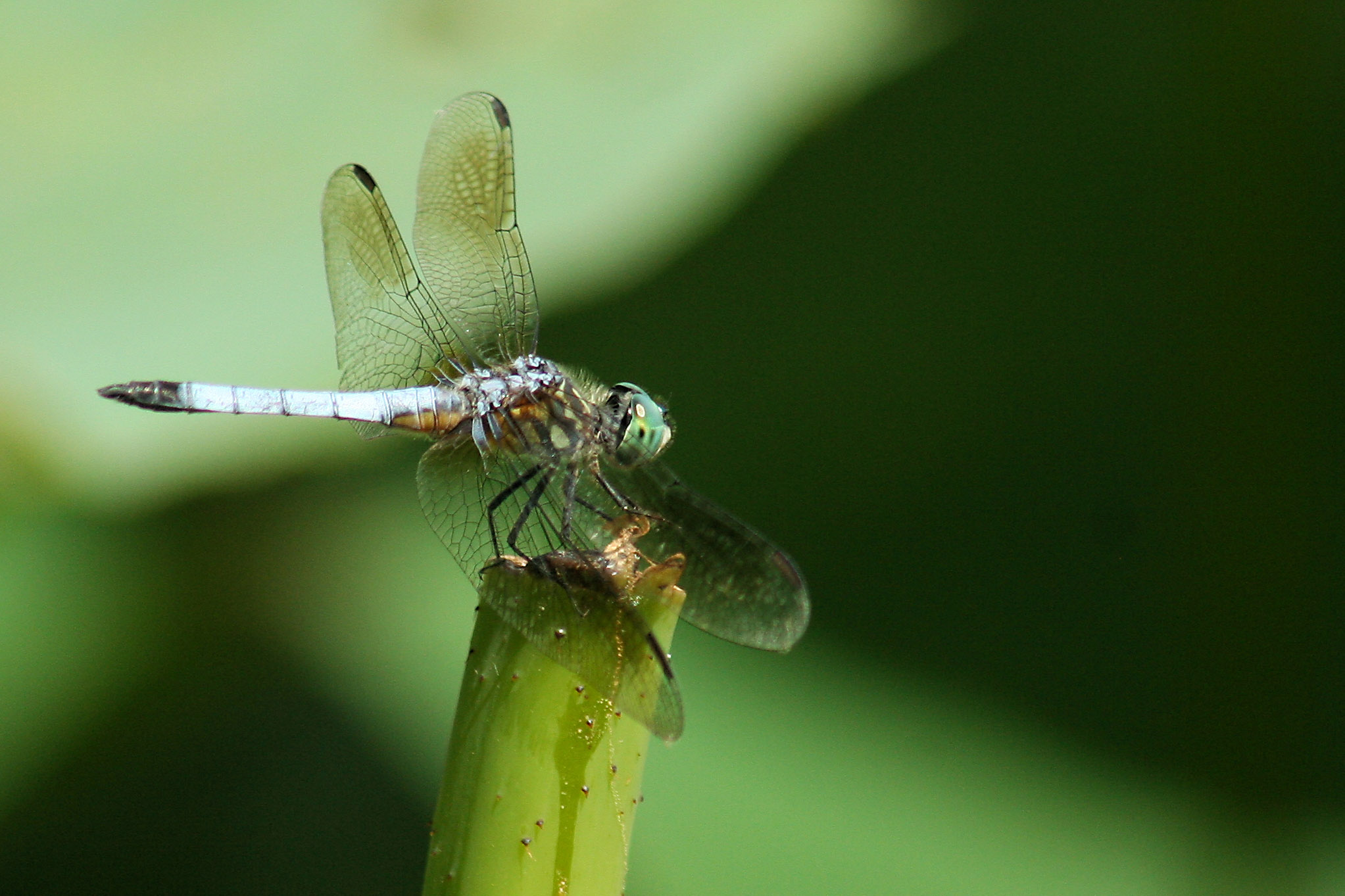Is It Just Me, or Are There A Lot of Dragonflies This Summer?
To help us tell stories about how weather and climate change are affecting our region, The Allegheny Front has partnered with iSeeChange—an online almanac where people share their observations and questions about what’s going on around them. This summer, our host Kara Holsopple found herself mulling over her own wildlife mystery: Why she was seeing so many dragonflies in Pittsburgh.
“I mean, sitting in the middle of traffic, two were mating on my car windshield. I don’t remember seeing anything like it before,” Kara said.
So we consulted an expert: Dennis McNair, a retired biology professor from the University of Pittsburgh at Johnstown. He’s been studying dragonflies at a wetland in Bedford County for 20 years. And he said part of the reason Kara’s seeing so many dragonflies could be psychological.
“When people start seeing things, no matter what it is—smart cars or whatever—once you’ve seen one, you start seeing others,” he said.
LISTEN: Your Environment Update for August 31, 2016
But there could also be some science behind it.
“This was a droughty summer, so the dragonflies maybe had warmer water they were developing in,” McNair said.
Turns out, dragonflies spend most of their lives in the larval stage, swimming around in the water. They eat mosquitoes and other bugs, which have also done well this summer. McNair says it’s possible the early spring and warm summer caused more of them to take flight.
McNair says dragonflies, like some other insects and birds, also might be shifting their range north. He has seen a couple of species in Bedford County that are usually found in places like Virginia and the Carolinas. It’s warmer here than it used to be. But he says without more study, it’s hard to say if climate change is impacting dragonflies.
###
For more climate stories from people just like you, head over to iseechange.org.
The Chesapeake Bay Restoration Effort Goes High-Tech
Though it may feel like a far-flung place to many Pennsylvanians, the Chesapeake Bay—and its environmental health—is actually tied intimately to life in the Keystone State. In particular, the Susquehanna River watershed feeds the Chesapeake—with both freshwater and runoff pollution.
But the Chesapeake Conservancy’s Jeffrey Allenby says new high-resolution imaging technology could help the state’s ongoing land conservation efforts to improve the Bay. Allenby and others are now using aerial images from USDA farm agency airplanes as well as technology that can recognize roads, houses and wetlands the way people would in a landscape. With it, they can see 900 times more data than the satellite images conservation groups have traditionally been using to make their decisions.
“It allows us to identify small-scale features like individual trees or small buffers that have a really large ecological benefit but may not be showing up in data that people have been using before,” Allenby says.
Using that technology, the Chesapeake Conservancy is working with partners in Clinton and Centre counties to pinpoint the most effective places to plant riparian forest buffers—trees and grassy strips along the banks of streams and rivers. Allenby says they’re the last line of defense in slowing down rainwater and preventing sediment and agricultural runoff like nitrogen and phosphorus from getting into the water.
But even though Pennsylvania has made strides in its commitment to curbing pollution reaching the Chesapeake Bay, Allenby says the state could be doing more. Right now, he says Pennsylvania is on track to miss its 2025 goal of having swimmable, fishable rivers.

